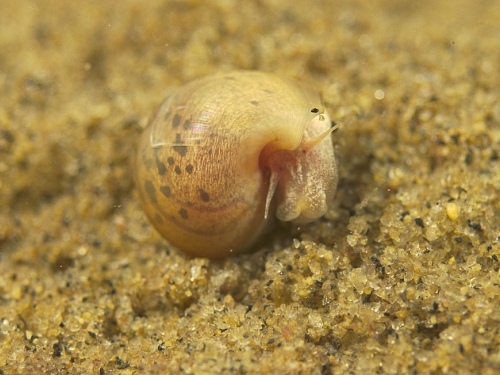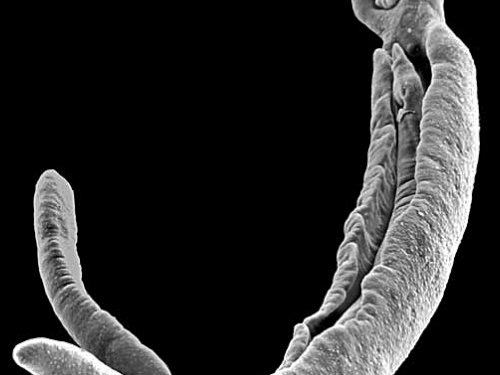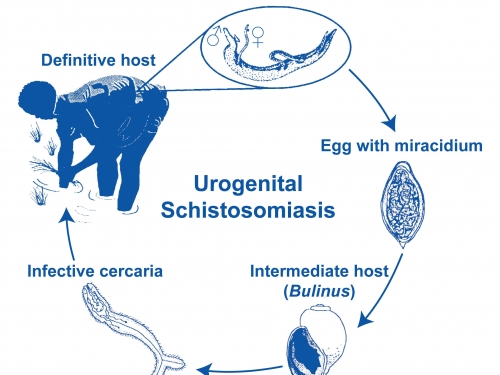Human population densities in Malaŵi have more than doubled over the past 30 years, resulting in intensified land use, overfishing and ecological changes that increase the spread of schistosomias in coastal areas frequented by tourists and locals alike. National Museum of Natural History scientist Bert Van Bocxlaer and an international team of researchers revealed that anthropogenic changes in Africa’s Lake Malaŵi are a driving force behind the increase of schistosomiasis, a debilitating tropical disease caused by parasitic flatworms that affects 250 million people worldwide and threatens 600 million more. (Photo courtesy of Van Bocxlaer et al. (2014), Trends in Parasitology 30 (5):217-220.)
Schistosomiasis: Anthropogenic changes
Courtesy of Van Bocxlaer et al. (2014), Trends in Parasitology 30 (5):217-220.




